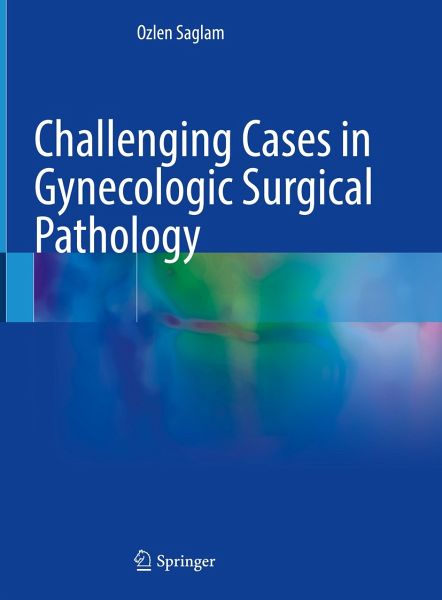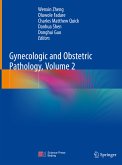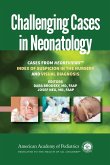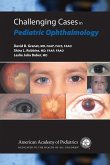Challenging Cases in Gynecologic Surgical Pathology (eBook, PDF)


Alle Infos zum eBook verschenken

Challenging Cases in Gynecologic Surgical Pathology (eBook, PDF)
- Format: PDF
- Merkliste
- Auf die Merkliste
- Bewerten Bewerten
- Teilen
- Produkt teilen
- Produkterinnerung
- Produkterinnerung

Hier können Sie sich einloggen

Bitte loggen Sie sich zunächst in Ihr Kundenkonto ein oder registrieren Sie sich bei bücher.de, um das eBook-Abo tolino select nutzen zu können.
Challenging Cases in Gynecologic Surgical Pathology discusses unusual clinical cases and uncommon presentations of usual diagnostic entities. The book is divided into four sections that contain over 14 years of teaching material from major academic institutions and cancer centers. The pathology case presentations are from different anatomical sites of the gynecological tract, including ovary and fallopian tubes, uterine corpus, cervix, and vulva. The chapters within each section contain epithelial, mesenchymal, or germ cell tumors and mimickers of cancer. Each case title has a brief clinical…mehr
- Geräte: PC
- ohne Kopierschutz
- eBook Hilfe
- Größe: 33.63MB
![Practical Gynecologic Pathology (eBook, PDF) Practical Gynecologic Pathology (eBook, PDF)]() Practical Gynecologic Pathology (eBook, PDF)89,95 €
Practical Gynecologic Pathology (eBook, PDF)89,95 €![Challenging Cases in Paediatric Radiology (eBook, PDF) Challenging Cases in Paediatric Radiology (eBook, PDF)]() Asthik BiswasChallenging Cases in Paediatric Radiology (eBook, PDF)81,95 €
Asthik BiswasChallenging Cases in Paediatric Radiology (eBook, PDF)81,95 €![Abdominal and Pelvic Imaging Cases (eBook, PDF) Abdominal and Pelvic Imaging Cases (eBook, PDF)]() Abdominal and Pelvic Imaging Cases (eBook, PDF)97,95 €
Abdominal and Pelvic Imaging Cases (eBook, PDF)97,95 €![Common Cases in Women's Primary Care Clinics (eBook, PDF) Common Cases in Women's Primary Care Clinics (eBook, PDF)]() Common Cases in Women's Primary Care Clinics (eBook, PDF)105,95 €
Common Cases in Women's Primary Care Clinics (eBook, PDF)105,95 €![Gynecologic and Obstetric Pathology, Volume 2 (eBook, PDF) Gynecologic and Obstetric Pathology, Volume 2 (eBook, PDF)]() Gynecologic and Obstetric Pathology, Volume 2 (eBook, PDF)169,95 €
Gynecologic and Obstetric Pathology, Volume 2 (eBook, PDF)169,95 €![Challenging Cases in Neonatology (eBook, PDF) Challenging Cases in Neonatology (eBook, PDF)]() Dara BrodskyChallenging Cases in Neonatology (eBook, PDF)83,95 €
Dara BrodskyChallenging Cases in Neonatology (eBook, PDF)83,95 €![Challenging Cases in Pediatric Ophthalmology (eBook, PDF) Challenging Cases in Pediatric Ophthalmology (eBook, PDF)]() Challenging Cases in Pediatric Ophthalmology (eBook, PDF)81,95 €
Challenging Cases in Pediatric Ophthalmology (eBook, PDF)81,95 €-
-
-
The sample cases therein may be diagnostically challenging for practicing pathologists in routine practice or relatively recently described entities. The intent of the book is not a complete review of gynecologic pathology. Instead, the focus is on unusual patterns of common gynecologic pathology cases and uncommon tumors of the gynecological tract with their relevant clinical work-up and differential diagnosis. The case illustrations provide a practical approach to diagnosing challenging gynecologic cancers. The aim is to be a valuable resource for practicing general pathologists and pathology trainees who encounter complicated cases in daily practice.
Dieser Download kann aus rechtlichen Gründen nur mit Rechnungsadresse in A, B, BG, CY, CZ, D, DK, EW, E, FIN, F, GR, HR, H, IRL, I, LT, L, LR, M, NL, PL, P, R, S, SLO, SK ausgeliefert werden.
- Produktdetails
- Verlag: Springer International Publishing
- Seitenzahl: 139
- Erscheinungstermin: 26. Februar 2024
- Englisch
- ISBN-13: 9783031516566
- Artikelnr.: 70121958
- Verlag: Springer International Publishing
- Seitenzahl: 139
- Erscheinungstermin: 26. Februar 2024
- Englisch
- ISBN-13: 9783031516566
- Artikelnr.: 70121958
- Herstellerkennzeichnung Die Herstellerinformationen sind derzeit nicht verfügbar.
Oregon Health and Science University
Department of Pathology and Laboratory Medicine
Portland, OR
USA







